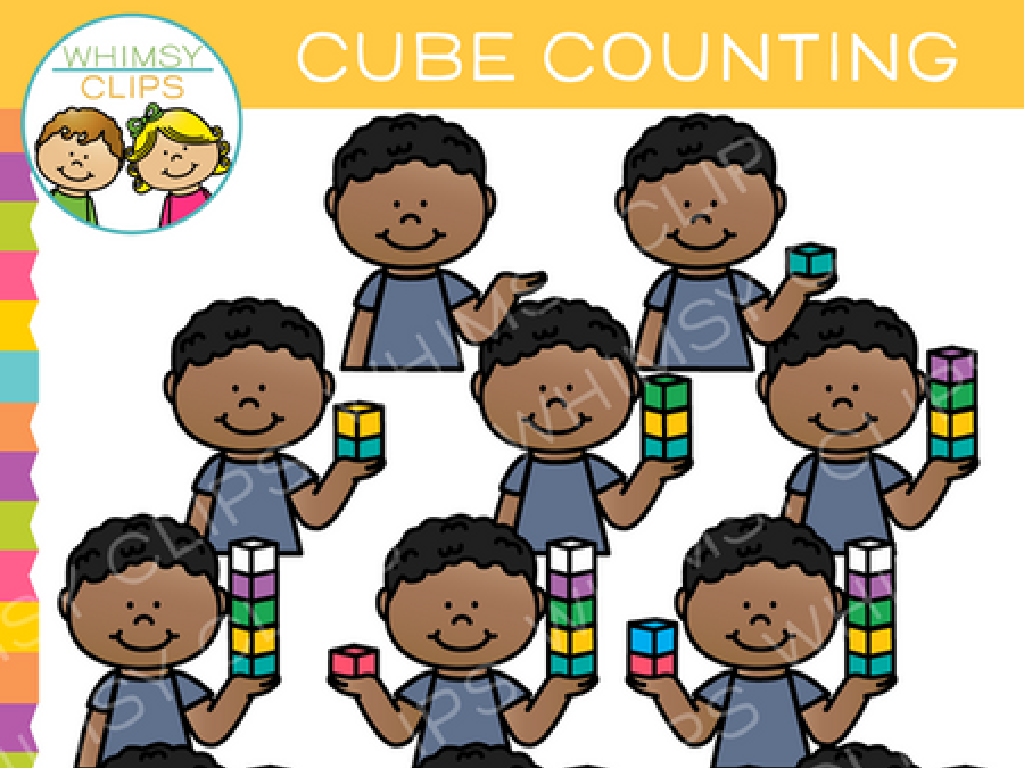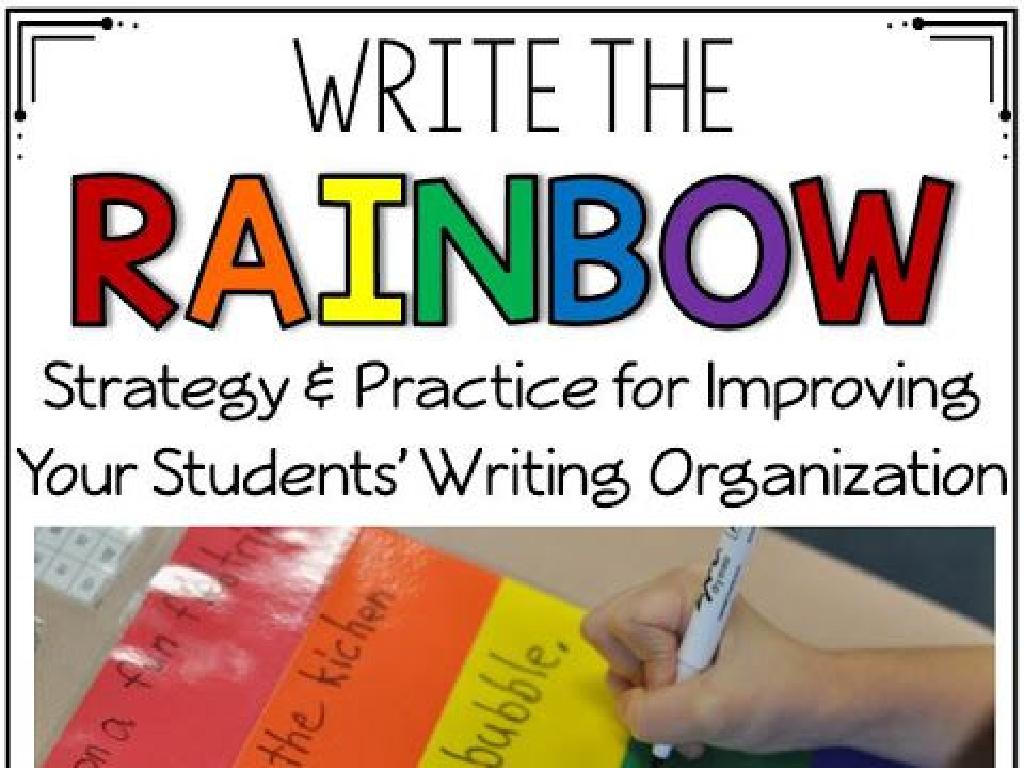Place Value Word Problems
Subject: Math
Grade: Fourth grade
Topic: Place Value
Please LOG IN to download the presentation. Access is available to registered users only.
View More Content
Welcome to Place Values!
– Each digit has a value based on its position
– For example, in 345, the ‘5’ is in the ones place, meaning 5 ones.
– Place value’s role in daily math
– Helps in operations like addition, subtraction.
– Introduction to word problems
– Word problems help apply place value in real scenarios.
– Practice with real examples
– We’ll solve problems involving shopping and money.
|
This slide introduces the concept of place value, which is fundamental to understanding numbers and performing arithmetic operations. Emphasize the importance of each digit’s position in a number and how it determines its value. Illustrate with simple examples, such as the difference between the ‘2’ in ’20’ and ‘200’. Explain that place value is not just a classroom concept but is used in everyday situations like shopping, banking, and cooking. Introduce word problems as a way to practice place value in real-life contexts. Prepare to engage students with practical examples that they can relate to, such as calculating change while shopping or comparing amounts of money. This will set the stage for the day’s lesson, where students will solve word problems that reinforce their understanding of place value.
Understanding Place Value
– Define place value
– Place value determines the value of a digit based on its position.
– Significance of each place
– Each place represents 10 times the value of the place to its right.
– Examples: ones, tens, hundreds
– Ones: 7; Tens: 70; Hundreds: 700
– Practice with thousands place
– How many thousands are in 4,000? What digit is in the thousands place?
|
This slide introduces the concept of place value, which is fundamental to understanding numbers in math. Place value refers to the value of a digit depending on its position within a number. Each position represents a power of 10. For example, in the number 345, the 5 is in the ones place, the 4 is in the tens place, and the 3 is in the hundreds place. This slide will help students recognize that the same digit can represent different amounts depending on where it is located in a number. Use examples to show how the value increases tenfold as you move from right to left. Encourage students to practice by identifying the place value of digits in larger numbers, especially focusing on the thousands place to prepare them for class activities involving higher numbers.
Building Numbers with Place Value
– Understand place values with base-ten blocks
– Base-ten blocks represent ones, tens, hundreds
– Build numbers using place value
– Use blocks to form numbers like 134 (1 hundred, 3 tens, 4 ones)
– Group activity: Building numbers
– Work in groups to create different numbers
– Discuss our number creations
|
This slide introduces the concept of building numbers using place value, which is fundamental in understanding math. Start by explaining how base-ten blocks can visually represent place values, with different-sized blocks for ones, tens, and hundreds. Demonstrate how to build a number by combining these blocks, and then let the students practice this in a group activity. Each group should use the blocks to build various numbers and then explain their process to the class. For the teacher: Prepare base-ten block sets for each group, ensure each student participates, and guide them to understand that the position of a digit in a number determines its value. Have a discussion afterward to reinforce the concept.
Reading and Writing Numbers with Place Value
– Reading numbers using place value
– Understand each digit’s value based on its position
– Writing numbers in three forms
– Standard form: 1,234; Word form: one thousand two hundred thirty-four; Expanded form: 1000+200+30+4
– Converting between number forms
– Change 1,506 from standard to word and expanded form
– Practice with real examples
|
This slide introduces students to the concept of place value in reading and writing numbers. Emphasize the importance of each digit’s position in determining its value. Show how to write numbers in standard form (as digits), word form (in words), and expanded form (sum of values). Use examples to demonstrate converting between these forms, such as turning 1,506 into ‘one thousand five hundred six’ and ‘1000+500+6’. In-class practice should include a variety of numbers for students to convert between forms, reinforcing their understanding of place value.
Place Value Word Problems
– Comprehend the question asked
– Find place value hints
– Look for numbers and their positions
– Step-by-step problem solving
– Break down the problem into smaller parts
– Practice with examples
– Use example: If you have 123 apples, how many tens are there?
|
This slide is aimed at helping students tackle place value word problems by first understanding what the question is asking. It’s crucial to read the problem carefully and identify keywords or phrases that indicate place values, such as ‘tens’, ‘hundreds’, or ‘thousands’. Once the clues are identified, guide the students through a step-by-step approach to solve the problem, ensuring they understand each part of the process. Provide examples to illustrate the method, such as determining the number of tens in a three-digit number. Encourage students to practice with additional problems and to explain their reasoning as they solve each step.
Let’s Practice Place Value Word Problems!
– Solve a sample problem together
– We’ll use a story problem to learn place value.
– Discuss solving strategies
– Look for clues: What place is the digit in?
– Practice with guided examples
– Work on problems with the teacher’s help.
– Share solutions and methods
|
This slide is designed to engage students in a collaborative learning experience focused on place value word problems. Start by working through a sample word problem as a class to demonstrate the process of identifying and using place value. Discuss various strategies such as underlining important information, determining the value of digits based on their position, and using visual aids like place value charts. Provide students with guided examples to practice, ensuring they receive immediate feedback and support. Encourage students to share their solutions and the methods they used to arrive at their answers, fostering a learning environment where students learn from each other.
Independent Practice: Place Value Problems
– Work on place value problems solo
– Discuss solutions with classmates
– Share your thinking, ask questions, and explain your reasoning
– Teacher support during activity
– I’ll be around to help and answer questions
– Focus on understanding place values
|
This slide sets the stage for students to engage in independent practice with place value word problems. Students should attempt to solve problems on their own, fostering self-reliance and problem-solving skills. Encourage them to discuss their methods and reasoning with peers, which can provide different perspectives and enhance understanding. As the teacher, you should circulate the room, offering assistance and checking for comprehension. This is also an opportunity to assess individual student progress. Possible activities include: creating their own place value word problems, solving provided word problems, using manipulatives to represent place values, or drawing pictures to visualize the problems.
Place Value Problem Solving Review
– Recap key place value concepts
– Share your problem solutions
– Present the word problems you solved
– Explain your solution process
– Describe the steps you took to find the answer
– Discuss various solving methods
– Compare different strategies used in solving
|
This slide aims to consolidate the students’ understanding of place value through active participation. Begin by reviewing the key concepts of place value that were covered in today’s lesson. Encourage students to come forward and share the word problems they worked on, explaining the reasoning behind their solutions. Facilitate a group discussion where students can compare and contrast the different methods they used to approach the problems. This will help them see the value in multiple solving strategies and understand that there can be more than one way to reach the correct answer. Provide guidance and clarification as needed to ensure a comprehensive understanding of place value concepts.
Class Activity: Place Value Game
– Engage in a place value game
– Work in groups on word problems
– Collaborate to solve problems using place value
– Follow the game rules
– Correct answers let you move on the game board
– Each correct answer advances your team
|
This interactive game is designed to reinforce the concept of place value through teamwork and problem-solving. Divide the class into small groups and provide each group with a set of place value word problems. The game will involve a game board where each correct answer allows the group to move forward. This activity encourages collaboration and application of today’s lesson in a fun, competitive environment. Possible variations of the game could include a relay race where each student solves a part of the problem, a scavenger hunt for numbers with different place values, or a matching game pairing word problems with their correct solutions.
Wrapping Up: Place Value Importance
– Summarize place value importance
Understanding place value helps in reading and writing large numbers correctly.
– Homework: Worksheet on place value
Complete the provided worksheet with various word problems to reinforce today’s lesson.
– Teach someone at home
Explain place value concepts to a family member to solidify your understanding.
– Review and practice
|
As we conclude today’s lesson, it’s crucial for students to grasp the concept of place value as it is foundational in mathematics. It allows for the proper comprehension and manipulation of numbers, which is essential for all future math concepts. For homework, students are provided with a worksheet that contains word problems focused on place value to further cement their understanding. Additionally, students are encouraged to teach someone at home what they’ve learned; this peer teaching technique can enhance their mastery of the subject. In the next class, we will review the homework and discuss any challenges faced by the students.






